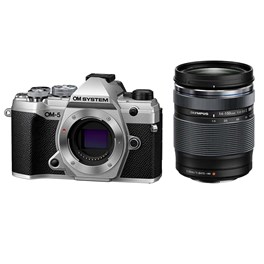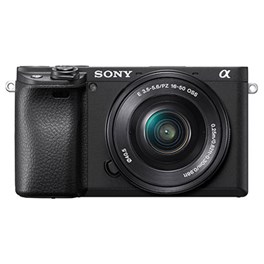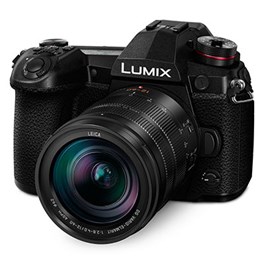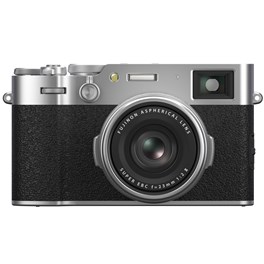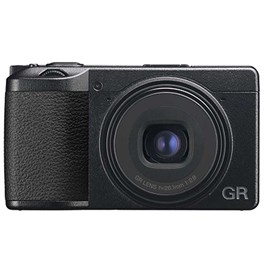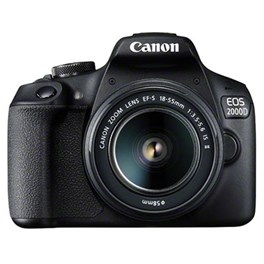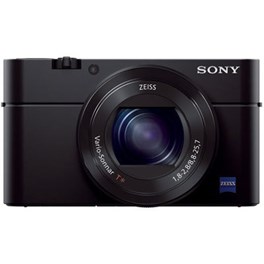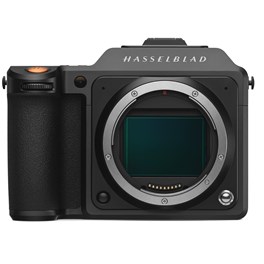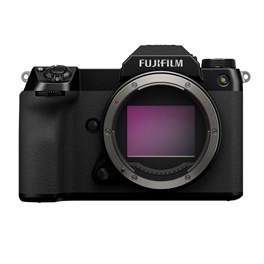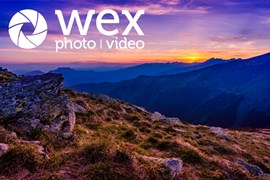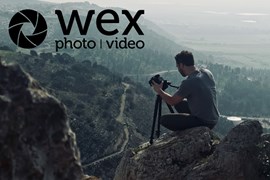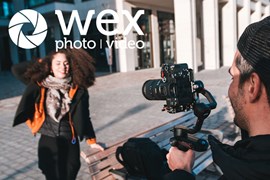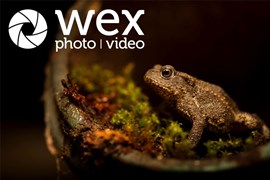
With the best camera for street photography, you can document the everyday life that happens around you with speed, precision and flair. Street is a hugely exciting genre of photography; at heart, it’s the art of capturing moments that will never be repeated.
The definition of street photography is quite broad, but at heart, it’s about documenting public spaces and the people who live and work in them. Any camera can be a street camera in the right hands, but at the same time, there are a few ways you can make the discipline easier and more accessible by focusing on the kinds of features that are best suited for the particular art of street shooting.
Here are the main criteria we’ve kept in mind when picking the best camera for street photography:
Speed - Street is all about capturing fleeting moments, and the thing about fleeting moments is… well, let’s not get redundant. Suffice to say, a camera with fast autofocus and solid burst speeds is really going to help you up your hit rate when street shooting.
Portable dimensions - A good street camera is ideally going to be unobtrusive. You want to see people behaving naturalistically, as they would if you weren’t there, so it helps to be able to blend into the background. Despite what some photographers may think, a massive SLR with a battery grip and a lens longer than your arm does not blend into the background. Thinking small is a good idea.
Tilting/articulating LCD screen - This isn’t completely essential – many street shooters prefer a viewfinder, and that’s fine too. However, if you want to shoot unobserved, a great way to do so is to avoid bringing the camera up to your eye – and having a tilting or (even better) fully articulating LCD screen is an excellent way to compose your shots while keeping the camera around waist level.
Affordability - Street photography is a fun, exciting discipline that requires no expensive lighting or other accessories. It’s just about you, the camera and the environment – as such, we’ve made an effort to keep this list accessible by including plenty of affordable cameras, as well as more expensive options for those who can stretch their budget.
Plenty of the cameras on this list are interchangeable-lens models – you can check out our guide to the best lenses for street photography for the right glass to pair with them. But for now, let’s get started with the best cameras you can buy for street photography…
Quick Navigation
Best Mirrorless Camera for Street Photography
Fast, portable and capable of delivering top-notch image quality – mirrorless cameras are some of the best choices you can make for street photography. This is where all the latest developments in camera tech are happening, but you don’t have to buy the top-end models to get fantastic features for street shooting. Plus, mid-range mirrorless cameras have the advantage of being smaller, more portable and less attention-drawing than a big pro-spec system camera – something we’ve kept in mind when making our picks.
All the mirrorless cameras we’ve chosen here deliver in every way for street photography. They’re fast, they’re reliable and they’re great for when you want to be discreet. They’ll shoot silently or near-to – perfect for staying unobserved in a busy street scene – and they also offer huge selections of lenses, so no matter what focal length(s) you prefer for capturing the street, you’ll be well covered.
OM SYSTEM OM-5 Digital Camera with 14-150mm F4-5.6 II Lens - Silver
This compact and durable micro four-thirds camera is ready for any adventure, boasting IP53-rated protection, up to 7.5EV steps image stabilisation, a 20.37 million effective pixel Live MOS sensor and a high-performance TruePic IX image processing engine. Combined with the flexibility of the 14-150mm F4-5.6 II Lens, this comprehensive kit is perfect for capturing highlights and making memories.
£1,499.00 View
Pros:
- JPEGs look fantastic straight out of camera
- Class-leading weather sealing
- Exceptional stabilisation
Cons:
- Uses old Olympus menu system
- 30fps buffer fills up fast
The OM SYSTEM OM-5 is a mid-range alternative to the radical sea-change that was the OM-1, the first camera out of the gate from the brand formerly known as Olympus. The fact that it takes so many features from that camera and packs them into a reasonably priced body that isn’t too large makes it one of our best picks for street photography.
With 30fps burst and on-chip phase-detection autofocus, the OM-5 is a reliable workhorse when it comes to capturing the moment. Images look great and punchy straight out of camera, particularly when you’re shooting in JPEG mode, so this is a solid choice for anyone who doesn’t want to spend too much time editing shots in software.
The IP53 weather sealing means you can keep snapping even when the heavens open for dramatic rainy shots. It’s an adventurous camera, ideal for taking on a day’s exploration of the city where you’re not sure what you might find.
Sony A6400 Digital Camera with 16-50mm Power Zoom Lens
The Sony a6400 bridges the gap between the company's hugely popular full-frame CSC, and APS-C line-ups. Boasting AF acquisition of 0.02 seconds (the world's fastest), newly developed 'Real-Time Eye AF', and 'Real-Time Tracking'. The a6400 can also shoot up to 11fps with AF/AE tracking, while a BIONZ X image processor, a tiltable LCD touch screen, and 4K video recording are also included. This kit comes with the Sony E 16-50mm f3.5-5.6 OSS Lens
£869.00 View
Pros:
- Exceptional focusing speed
- Slim and unobtrusive
- 11fps shooting speeds
Cons:
- Not the most comfortable to grip
- Limited physical control buttons
If street photography is all about reacting quickly, then the Sony A6400 is one of the most valuable tools you can put in your arsenal. Its super-speedy autofocus system is one of the most sophisticated on the market, certainly among the best in a camera that isn’t priced for professionals. With a spread of 425 phase-detection and contrast-detection AF points, the Sony A6400 can acquire focus in as little as 0.02sec.
With its slim black body, the Sony A6400 doesn’t call attention to itself, and is great for casual street snapping. This stripped-back body does mean a fairly slim handgrip, as well as a paucity of control buttons, meaning if you want to majorly change settings you’ll be diving through Sony’s menu systems. It’s not the easiest camera to master, but if you take the time to get to learn the Sony A6400 and its idiosyncrasies, its sheer speed is near-unrivalled.
Panasonic Lumix G9 Digital Camera with 12-60mm F2.8-4.0 Leica Lens
Free 25mm f1.7 lens worth £148
The Panasonic Lumix G9 is the flagship model designed for photographers that need the highest quality and speed possible. At the heart of the G9 is a powerful 20.3 megapixel sensor and the Venus processing engine. There's also 5-axis image stabilisation in the shape of Lumix's Dual I.S II system which facilitates the camera's 80MP mode in JPEG and RAW, as well as burst shooting at 20fps. Other useful features included include dual SD card slots, a 6K photo mode, and 4K60p video. This kit includes the Panasonic 12-60mm f2.8-4.0 LEICA DG VARIO-ELMARIT POWER O.I.S. Lens.
£1,199.00 View
Pros:
- Loads of lens options
- Dual UHS-II SD slots
- High-quality EVF and articulating LCD
Cons:
- Dated contrast-detect AF system
- Big for an MFT camera
The Panasonic Lumix G9 is a mirrorless Micro Four Thirds camera, just like the OM SYSTEM OM-5, meaning both cameras can use each other’s lenses interchangeably, with full functionality. While MFT is a smaller sensor size than other standards, its increased crop factor means you get a little more telephoto reach out of your lenses – which can be a boon for street photography.
A speedster shooting at 20fps, the Lumix G9 is more than equipped to capture fast-paced moments in the street. Its 20.3-megapixel Live MOS Sensor with no low-pass filter provides vivid and punchy images full of colour, and the ergonomics of the camera are also first-rate. Whether you prefer to compose images on a nice big electronic viewfinder or an articulating LCD screen, you’re well catered-for here. The Lumix G9 is somewhat on the large side for a Micro Four Thirds camera, but is still more portable than a DSLR.
Best Compact Cameras for Street Photography
We’re rounding out our list with some absolutely sublime compacts that make for terrific partners in street photography. When shooting the street, you don’t want to be fussing with changing lenses, and many photographers advocate a prime lens as it forces you to work harder and think more creatively than you do if you have the convenience of a zoom. So, for this last section, we’ve chosen a couple of premium fixed-lens compact cameras that use primes. So, while you’re limited to a single focal length, you get the benefit of pristine image quality, and a tight, portable setup.
Anyone who’s familiar with the world of premium compacts can probably guess the cameras that are about to come up. It’s worth noting that the models we’ve included here are the most recent iterations in long-running series – so if you like what you see but can’t quite make your budget stretch, you may be able to find a previous iteration for a great price on the second-hand market.
Fujifilm X100VI Digital Camera - Silver
Fujifilm’s X100VI outshines its predecessor with an upgraded 40.2MP X-Trans CMOS 5 HR sensor and a rapid X-Processor 5 engine for standout imaging. The compact, portable body houses 6-stops IBIS, AI subject detection, and the latest AF algorithm for sharp, high-quality images on the go. Impressive 6.2K/30p video recording and the newest film simulation modes ensure creative and impactful results.
£1,599.00 View
Pros:
- Tonnes of upgrades over the X100V
- 40MP sensor allows 3x digital zoom for a 35mm, 50mm and 70mm equivalent focal length
- 6 stop IBIS and up to 6.2K video
Cons:
- The same 23mm lens; limiting for some
- Costs more than the X100V
- Only a single UHS-I card slot
The Fujifilm X100VI is the sixth iteration of this series and successor to the infamous X100V, whose stock issues plagued us all. This latest model sees a slew of upgrades that bring the X100VI to the expected standard. We have a versatile 40MP sensor, some of Fujifilm's best AF performance and finally, in-body image stabilisation.
The model retains the same classic Fujifilm dial-based control system, giving that throwback to the days of analogue shooting. As with all Fujifilm cameras, the X100VI produces a certain colour profile and tone that Fuji users long for. Of course, you can take it a step further by experimenting with Fujifilm's hugely popular Film Simulation modes.
More on that sensor. It is the same 40.2MP X-Trans 5 sensor as used in the X-T5 and X-H2 and is coupled with the X-Processor 5 which together provide excellent speed and precision. This upgrade also provides a boost to video capabilities allowing you to shoot up to 6.2K video footage. The full list of upgrades is dizzying, to say the least, but all in all, the improvements further show how well this camera is suited to street photography, and now, videography too.
Ricoh GR IIIx Digital Camera
Tailored to travel, street, and snapshot photography, the Ricoh GR IIIx centres around a versatile 26.1mm f2.8 lens (equiv. 40mm in 35mm format) and expansive APS-C-format CMOS image sensor. As a powerful pocket-sized companion, the GR IIIx is capable of full HD video recording (1920 x 1080 pixels, 60fps), backed up by an intuitive HD 3.0-inch LCD monitor and super-fast 0.8-second startup speed.
£999.00 View
Pros:
- 40mm equivalent lens provides naturalistic perspective
- Intuitive, well-engineered handling
- Cheaper than X100V
Cons:
- Rear screen is fixed
- Battery can run down fast
Another premium compact that counts legions of street photographers among its fans, the Ricoh GR IIIx is a joy to shoot with. It’s an alternative version of the Ricoh GR III, essentially the same proposition, but whereas that camera uses a 28mm equivalent lens, this one uses a 40mm equivalent optic. You can consider this entry a recommendation for both – personally we prefer the naturalistic 40mm perspective for street shooting, but if you think you might like a wider view, the Ricoh GR III may be a better fit.
In either case, the camera handles brilliantly, and with its APS-C sensor it can capture absolutely brilliant images. The lens is sharp enough to deliver image clarity from edge to edge, and the autofocus is reliably snappy and accurate. There’s no viewfinder, though you can add a clip-on if you wish. Also, with an 0.8sec startup time, this is a camera that allows you to be ready to shoot at a moment’s notice. Perfect for the street!
Best DSLR Camera for Street Photography
There are loads of reasons a street photographer might opt for a DSLR. The optical viewfinder is a big one – even with electronic viewfinders getting as good as they have, for some photographers, you simply can’t beat the immediacy of a mirror system showing you exactly what’s playing out in front of you. Others prefer the ergonomics, happy to sacrifice inconspicuousness in favour of a chunky handgrip and physical button-based control-scheme. Lens choice is a factor too – the best DSLR systems have been going for decades, and using lens mounts that have been going for decades longer, so they have absolutely loads of lenses to choose from.
Then there’s also the fact that the gap between mirrorless and DSLR systems performance-wise isn’t as large as you might think. More recent DSLRs have introduced features like on-chip phase-detection autofocus, enabling them to hold their own against mirrorless rivals in terms of autofocus speeds.
Canon EOS 90D Digital SLR Camera Body
The Canon EOS 90D comes as the upgrade to the popular Canon 80D. The 80D became a go to camera for both professionals and amateurs because it was such a versatile system, so this upgrade is sure to impress any level of photographer. It features a larger 32.5 megapixels APS-C imaging sensor that will produce some incredible detailed photographs and video footage. Like the 80D, the 90D has been designed for speed; catering to sports and wildlife photographers - Or anyone who has fast moving subjects. It's also capable or capturing some stunning 4K footage and of course, features Canon's EF-S mount, meaning there are a huge range of compatible lenses for you to choose from. Take a look at the impressive list of features this camera has!
£1,299.00 View
Pros:
- Generous resolution
- Impressive focus tracking
- Loads of EF-mount lenses
Cons:
- No stabilisation
- Limited buffer capacity
In street photography, there’s a lot to be said for a camera that can be comfortably operated one-handed. And while the EOS 90D may not technically be as light on its feet as some mirrorless counterparts, its deep and chunky handgrip and sensibly laid-out controls mean it’s eminently agile in use, and a great choice for street shooting. There are loads of lightweight, high-quality Canon EF lenses to choose from (the EF 50mm f1.8 is a classic inexpensive starting point).
The APS-C sensor on the EOS 90D bears a resolution of 32.5MP, which is a cut above many comparable cameras, providing you with a little more wiggle-room to crop and/or print. Even so, the EOS 90D manages a meaty burst rate of 10fps, and can keep hold of moving subjects pretty well thanks to its iTR focus tracking system. Be aware though that the shot buffer in continuous mode is a little slimmer than some comparable models – topping out at 25 RAW files or 58 JPEGs, which at ten frames per second you’ll hit in no time.
Nikon D780 Digital SLR Camera Body
The Nikon D780 comes as the eagerly anticipated successor to the well-regarded Nikon D750. It features a powerful 24.5 Megapixel Full Frame CMOS Sensor and EXPEED 6 image processor. This camera body can offer something to every level of photography and videographer alike. It features a 51-point Phase-Detection AF via the Viewfinder and 273-point Hybrid-AF system in Live View. The camera can shoot up to 7 fps with AF/AE and up to 12 fps in Silent Live View Photography mode. When it comes to video, the camera is capable of capturing 4K/UHD footage at 30p/25p/24p with zero crop factor. It also features dual SD card slots and an incredibly useful and high-quality tilting touchscreen.
£2,299.00 View
Pros:
- Fast phase-detection autofocus
- 12fps silent shooting
- Big ISO range
Cons:
- No in-body stabilisation
- No AF joystick
The most advanced DSLR released by Nikon, the full-frame D780 brings the best of mirrorless technology and places it in a classically styled DSLR body. Its on-chip phase-detection autofocus system is superb for locking onto tricky moving subjects, and pair this with a 12fps silent shooting burst mode and you can see how this is a hell of a prospect for street photography. The ISO range of the D780 runs up to 51,200 natively, and can be expanded to 204,800, meaning shooting doesn’t have to stop when the light gets low.
Just like with a Canon DSLR, the Nikon camera offers an incredible catalogue of F-mount lenses, dating back to the days of film SLRs. It lacks a few high-end modern features, such as in-body stabilisation or the subject-detect autofocus that we’ve seen arrive on top-flight cameras in recent years – however, the Nikon D780 is still an absolute beast of a DSLR for street photography.
Best Budget Camera for Street Photography
While we’ve generally tried to keep this guide focused on affordable cameras – as befitting street photography – we know that everyone’s budget is different. Therefore, in this section we’ve picked out some of our favourite ultra-affordable cameras that will still perform at the level required by street photographers.
When choosing a budget camera, there’s no sense being sniffy about type, and so we’ve got a mix of interchangeable-lens and compact cameras in this section. We’ve also chosen models that are generally a few years old – this is one of the most reliable ways to get real value for money when buying cameras. Many manufacturers keep their older models on the market as compelling low-cost alternatives to the newer stuff (Sony is particularly good about this), and it’s a great way to get a premium shooting experience at a reasonable price.
So, for the budget-conscious shooters, here are the best street photography cameras that won’t break the bank…
Canon EOS 2000D Digital SLR Camera with 18-55mm IS II Lens
The Canon EOS 2000D Digital SLR Camera Body is the perfect beginner camera to get you started with DSLR photography. With its easy operability, intuitive design, and in-camera guide, the EOS 2000D will bring your images to life. Create effortlessly gorgeous background blur and capture exciting moments with cinematic Full HD video. Share these in an instant thanks to the Wi-Fi and NFC connectivity. The 24.1-megapixel imaging sensor, with up to 19x more surface area than most smartphones, is sure to make your photographs stand out. To top things off, EOS 2000D comes with the Canon EF-S 18-55mm f3.5-5.6 IS II lens.
£529.00 View
Pros:
- Useful in-camera feature guide
- Very portable
- Lots of EF-S lens options
Cons:
- Only 9 AF points
- Kit lens tops out at f3.5
A popular beginner’s DSLR from Canon, the EOS 2000D comes straight out of the box with everything you need to start shooting, including a Canon EF-S 18-55mm f3.5-5.6 IS II kit lens. While you may start chafing against the limited maximum aperture once you get used to operating the camera, it’s still a solid foundation to learn on. Plus, with the guided modes on the EOS 2000D, you can get acclimated with its features and functions nice and quickly, meaning you don’t have to spend too much time getting used to the camera before you can start shooting the street.
With an APS-C sensor and 24.1MP of resolution, the EOS 2000D offers tremendous image quality for your money. And while it isn’t going to match the high-end cameras for things like autofocus speed or burst rate, it does a credible job nonetheless, and it’s perfectly possible to get excellent street shots with this camera.
Sony Cyber-Shot RX100 III Digital Camera
The Sony RX100 III is designed for the serious photographer looking for exceptional image quality in an extremely travel-friendly compact camera. The pop-up OLED Tru-Finder electronic viewfinder is a first in the RX series and provides rich contrast viewing and extra flexibility when framing your images, while clearly displaying settings, so you can accurately monitor the results. Another big enhancement over its predecessor is the inclusion of a faster, wider 24-70mm f1.8-2.8 lens, which delivers better low light performance and a shallower depth-of-field. Other features include a built-in ND filter, a multi-angle 3.0" LCD display, Wi-Fi with NFC and support for XAVC S format, for enhanced video recording of 1080/60p at 50Mbps.
£479.00 View
Pros:
- Gorgeously high-quality Zeiss-made lens
- Pop-up viewfinder
- 1-inch sensor produces top-notch images
Cons:
- No stabilisation
- So small it can be fiddly to use
How times change. On release in 2014, the Sony Cyber-Shot RX100 III was a premium compact commanding a premium price – however there have been four more models in this series since, and these days it can be picked up for a good deal less. For this kind of money, a 1-inch sensor and a Zeiss-made 24-70mm f1.8-2.8 lens is a hell of an imaging combination, again hitting a focal-length sweet spot for street shooters. The body is so small you can take it everywhere with you, and it even finds space for a little pop-up viewfinder.
The RX100 III is old enough that it does pre-date some handy features like optical stabilisation, so watch your shutter speeds. Also, it bears repeating that this really is a very small camera – to the point where those with larger hands may find its buttons a little too fiddly to operate.
Best Medium Format Camera for Street Photography
A few years ago, the idea of using a medium format camera for street photography would scarcely have seemed credible. These systems used to be too slow, too ponderous and too bulky for the demands of street shooting – never mind too expensive. However, that has all changed with the advent of mirrorless medium format systems pioneered by Fujifilm and Hasselblad. While these cameras are never going to match the burst and focusing speeds of mirrorless or DSLR models, they’re fast and portable enough to get the job done on the street, meaning that street photographers can still enjoy the medium format look.
We’ve picked out a couple of mirrorless medium format cameras that we reckon are your best bet for street shooting with a large-format sensor. With great lens ranges and ergonomically sound bodies, these cameras open up a whole new dimension for what street photography can look like.
Hasselblad X2D 100C Medium Format Digital Camera Body
The Hasselblad X2D 100C features innovative improvements over the X1Ds. This medium format mirrorless camera has a powerful 100MP Back-Side Illuminated CMOS sensor that reduces noise and improves overall image quality. It also sports In-Body Image Stabilisation and an improved OLED EVF. With other features, such as internal SSD storage and a tilting display, the X2D is a compact but powerful tool.
£7,369.00 View
Pros:
- Lightweight system optimised for travel
- Absolutely stunning images
- Phase-detect autofocus
Cons:
- Screen only tilts, not fully articulated
- No video shooting at all
The original Hasselblad X1D cameras, while wonderful in myriad ways, were not credible street photography cameras due to their reliance on a contrast-detect autofocus system that simply couldn’t keep up with faster subjects. The new Hasselblad X2D 100C, however, implements a hybrid phase detect autofocus system with 294 zones. Is it the best in class? Of course not – the Nikon Z9 isn’t about to lose any sleep – but it’s faster than fast for a camera of this type, and means that street photographers can enjoy the spectacular image quality of the Hasselblad X2D 100C.
And we do mean spectacular. The 100MP images created by the Hasselblad X2D 100C are simply jaw-dropping, full of depth and detail in their native 16-bit format. It’s a surprisingly portable camera too – Hasselblad is selling it in a “travel light” kit with two of their more compact primes, and this setup is a fantastic starting point for street shooters.
Fujifilm GFX 100S Medium Format Camera Body
Designed for portability and unrivalled image quality, the Fujifilm GFX 100S Medium Format Camera Body provides professional large-format image quality and performance on a smaller, more manageable scale. The Fujifilm GFX 100S sees a range of upgrades and improvements over its predecessor including, a fantastic lightweight and compact physical redesign that is 500g lighter, a redesigned In-body Image Stabilisation system and an updated shutter mechanism. Of course, the 102MP imaging sensor can capture consistently beautiful images that are crisp, rich with clarity and full of deep, punchy colours.
£3,499.00 View
Pros:
- Very compact for a 100MP camera
- Fast, reliable autofocus
- Film Simulation modes
Cons:
- Battery life is not the best
- Focusing slower with some lenses
Fujifilm’s own 100MP camera uses an impressive hybrid autofocus system with 425 focusing points. Again, it’s not a patch on the speed and accuracy of focusing systems used in full-frame and APS-C cameras, but it’s very impressive nonetheless, and puts the GFX 100S in play for street shooting.
The image quality is, of course, sublime. Fujifilm’s colour science is some of the best in the business, and while you certainly can shoot in RAW and edit to your heart’s content, using the GFX 100S in JPEG mode and playing with the Film Simulations is just a joyful experience that we’d recommend to anyone – especially street photographers. There are plenty of high-quality GFX lenses available to experiment with, too – be warned that some are a little slower to focus than others, so it’s worth checking out online reviews when picking your lenses to make sure they can keep up with the kind of photography you want to do.

FAQs
What kind of camera should I buy for street photography?
Look for a camera that's compact and lightweight, with good autofocus, low-light performance, and fast burst shooting. A mirrorless camera or a high-end compact camera would be a good choice.
Do I need to buy an expensive camera for street photography?
No, you don't need an expensive camera for street photography. A good camera with a fixed lens and manual controls is all you need. The important thing is to master the art of seeing and capturing interesting moments.
Which lens is best for street photography?
A prime lens with a wide aperture (such as f1.8 or f2) is ideal for street photography. A 35mm or 50mm lens is popular among street photographers because they're versatile and allow you to capture a wide range of subjects.
Should I shoot in manual mode for street photography?
Shooting in manual mode gives you full control over your camera settings, which is important in street photography. However, it can be challenging to get the settings right in a fast-moving environment. If you're new to photography, you may want to start with aperture priority mode and then gradually move to manual mode.
Do I need a tripod for street photography?
No, you don't need a tripod for street photography. In fact, it can be a hindrance when you need to move quickly to capture a fleeting moment. A handheld camera or a camera with in-body image stabilisation should be sufficient.
Should I shoot in RAW or JPEG for street photography?
Shooting in RAW format gives you more control over your post-processing, allowing you to adjust the exposure, color, and sharpness of your images without losing quality. However, it also requires more storage space and processing power. Shooting in JPEG format is more convenient if you don't plan to do a lot of post-processing.
How important is the camera's autofocus system for street photography?
The autofocus system is crucial for street photography, as you need to be able to focus quickly and accurately on your subject. Look for a camera with a fast and reliable autofocus system, preferably with a high number of autofocus points and face detection.
Browse our full range of cameras
How do we decide?
Our in-house photography experts, store staff and partners all work collaboratively to pour over these guides. The cameras and equipment recommended in our guides are based on their personal opinion, empirical experience and of course, feedback from our customers.
We way up price, features, quality and the all-important 'je ne sais quoi' to make sure we recommend products that will delight and inspire.
If you would like more advice on any purchase our contact centre staff are here to help. Alternatively, you can reach us via email or social media.
And don't forget. If you were to purchase anything based on our recommendations you'll be covered by our full returns policy
Buying Guides

